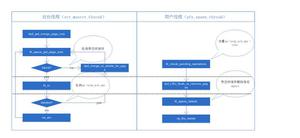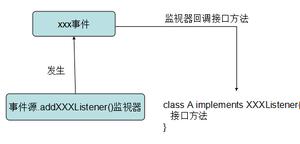Koa 中的错误处理解析
不像 express 中在末尾处注册一个声明为 (err, req, res, next) 中间件的方式,koa 刚好相反,在开头进行注册。
app.use(async (ctx, next) => {
try {
await next();
} catch (err) {
ctx.status = err.status || 500;
ctx.body = err.message;
ctx.app.emit("error", err, ctx);
}
});
这样程序中任何报错都会收敛到此处。此时可以方便地将错误打印到页面,开发时非常便捷。
+ ctx.app.emit('error', err, ctx);
koa 也建议通过 app 来派发错误,然后通过监听 app 上的 error 事件对这些错误做进一步的统一处理和集中管理。
app.on("error", (err, ctx) => {
/* 错误的集中处理:
* log 出来
* 写入日志
* 写入数据库
* ...
*/
});
一个错误捕获并打印到页面的示例:
const Koa = require("koa");
const app = new Koa();
app.use(async (ctx, next) => {
try {
await next();
} catch (err) {
const status = err.status || 500;
ctx.status = status;
ctx.type = "html";
ctx.body = `
<b>${status}</b> ${err}
`;
// emmit
ctx.app.emit("error", err, ctx);
}
});
app.use(ctx => {
const a = "hello";
a = "hello world!"; // TypeError: Assignment to constant variable.
ctx.body = a;
});
app.on("error", (err, ctx) => {
console.error("Ooops..\n", err);
});
app.listen(3000);
通过 node server.js 启动后访问页面可看到命令行的错误输出。
如果使用 pm2,可通过 —no-daemon 参数使其停留在在命令行以查看输出。
如果不使用上述参数,可通过 pm2 logs [app-name] 来查看。
ctx.throw
朴素的抛错方式需要手动设置状态码及信息对客户端的可见性。
const err = new Error("err msg");
err.status = 401;
err.expose = true;
throw err;
expose 决定是否会返回错误详情给客户端,否则只展示状态对应的错误文案,比如 500 会在浏览器中展示为 Internal Server Error 。
而通过 ctx.throw 这个 helper 方法会更加简洁。
上面的代码片段等价于:
ctx.throw(401, "err msg");
如果不指定状态码,默认为 500。5xx 类错误 expose 默认为 false ,即不会将错误信息返回到 response。
抛错时还可以传递一些额外数据,这些数据会合并到错误对象上,在处理错误的地方可以从 error 上获取。
app.use(ctx => {
ctx.throw(401, "access_denied", { user: { name: "foo" } });
});
app.on("error", (err, ctx) => {
console.error("Ooops..\n", err.user);
});
参考
Error Handling
ctx.throw
以上是 Koa 中的错误处理解析 的全部内容, 来源链接: utcz.com/z/318653.html








